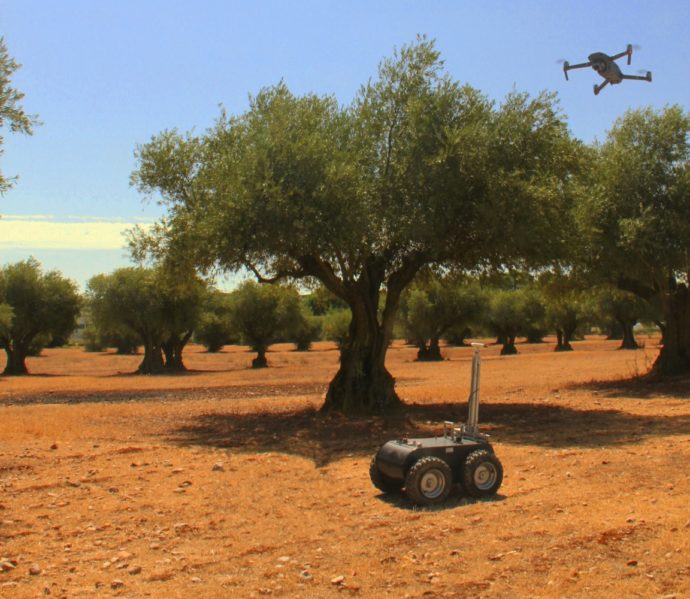As part of work package 2, an analysis has been carried out about the current State-of-the-Art and future trends in robotics for precision agriculture. Let’s combine all the technology and imagine the vehicle of the future.
Primarily, our machine consists of high precision GNSS sensors and combines this information with data from other sensors like cameras and ultrasound to be able to position itself within centimetre accuracy of its desired location.
Secondly, it has actuators fitted to perform tasks meticulously. Grippers, cutters and manipulators that can handle the plants and crops in a bruise-free way; precision nozzles that only spray on the desired location, and; robotic arms to move the actuators to the desired location of actuation.
To be able to carry out the tasks on this precise location, our robot is also fitted with high-accuracy sensors and high-speed processors to allow for real-time decision making. With this, our vehicle can distinguish weeds from crops and detect ripeness levels of the harvest, and can therefore selectively perform the task required. Moreover, it can sense the need of individual plants based on subtle differences in appearance and soil measurements.
Then, we will scale down our robot to a weight of around 400kg, and make a dozen copies. A swarm of our robot is going to carry out the task, thus making the entire process easily scalable to any sized farm, without the need of too big investments. Moreover, we will suffer less soil compaction and shorter down-times, resulting in healthier crops, better efficiency, and higher yields.
What’s more, most vehicles will be electrically driven, reducing emissions and total fuel consumption. Many of those will be fitted with their own solar panels and fuel cells, extending their working range and time.
Lastly, we will combine all the data we collect from each vehicle to improve our overall decision-making. The paths, the field use, and the order of tasks can be optimised. One could imagine data from aerial vehicles to be beneficial for local, plant specific decisions.
To read the full report, download it here.

